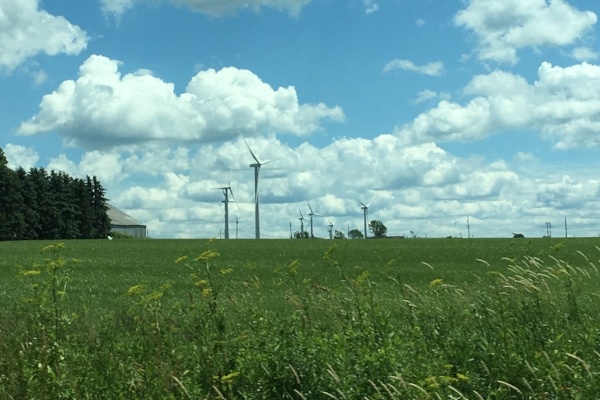Knowing the failure rates for your major systems and components at various stages of its life cycle can help lower your levelized cost of energy (LCOE). The LCOE is the utility industry’s primary metrics for calculating the cost of electricity that your wind turbine fleet is outputting. The system’s expected lifetime costs, including construction, financing, fuel, maintenance and insurance are added and then divided by the expected power output (kWh). A lower LCOE means that electricity is being produced at a lower cost, and in return the owners and operators are getting a higher return on their investment.
At Sentient Science, our material scientists have built multiphysics-based life extension models of the major systems and components that make a wind turbine run more efficiently. Our customers use the DigitalCloneLive software, which is activated at our computational testing lab here in Buffalo, NY, so there is no hardware or installation needed, to simulate thousands of tests that predict with accuracy when a component will fail. In fact, we know the points in time when these components will begin nucleation before a physical test is able to detect it.
How does knowing when components will fail help lower your LCOE?
We took our materials science-based life extension models and applied them to three levels of visibility that will help different managers within a wind energy corporation optimize their operations and maintenance practices and build their business models to ultimately save on O&M costs and extend the life of their assets.
The first visibility, our short-term prognosis for assets that are already showing signs of failure, provides solutions to operational and supply managers on how to execute the remaining useful life of the component or gearbox.
The second visibility provides an 18 month rolling forecast into the predictive health of the components. Managers of assets use this information for monitoring and to make decisions about the supply and spare parts used when up-tower maintenance is needed. Strategic decisions can be made to extend the life of the assets, including solutions that will result in fewer, costly up-tower maintenance and replacement services.
The third visibility gives a long-term prognosis into how long the components used in an asset will last. Managers of risk, development executives, financial officers and mergers and acquisition professionals want to know this information to assess that the right applications are used in the asset. The solutions we provide could impact an owner or operator’s business strategy, including which suppliers to use based on the location of the fleet, because certain weather conditions could impact the type of component that should be used. It could also help in the decision-making process of which assets to buy and sell based on the RUL. And finally, because different solutions may be used to extend the life of an asset, the information provided could be used to leverage lower warranty costs and insurance rates.
The end result of using DigitalClone Live to make different business decisions will be a reduced LCOE and increased revenue.
To learn more about how to “Turn Your Wind Data Into Gold,” view our webinar recording here.
